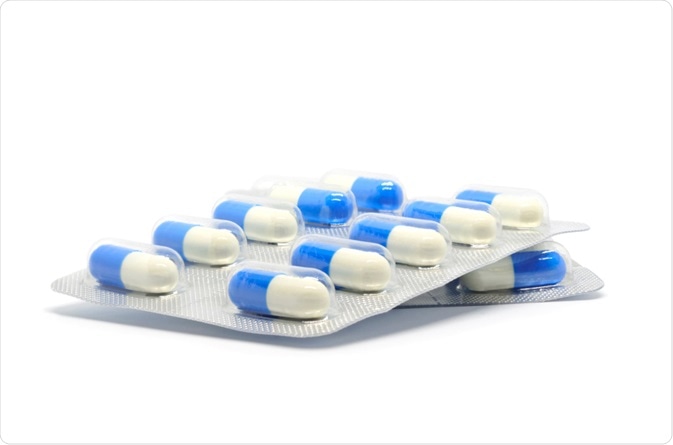The penicillin family represents one of the most valuable groups of antibiotics in practically every area of modern healthcare. They are bactericidal, well distributed, and highly effective against susceptible organisms. The development of synthetic penicillins has both broadened the spectrum of activity and enhanced the efficacy of these medications.
The penicillins are classified according to their antibacterial spectrum and all of them share three basic chemical components: a thiazolidine ring, an attached beta-lactam ring and one or more substituted amino acid side chains. They can be divided into natural penicillins, penicillinase-resistant penicillins, aminopenicillins, carboxypenicillins and extended-spectrum penicillins.
 Image Credit: Areefin / Shutterstock.com
Image Credit: Areefin / Shutterstock.com
Natural penicillins
Penicillin G is natural penicillin produced directly from fermentation of Penicillium crysogenum and a prototype compound in a penicillin series. Penicillin V is an oral derivative of penicillin G which is considered natural penicillin due to similarities in its spectrum of activity.
The natural penicillins exhibit activity against non-beta-lactamase producing gram-positive cocci – including group A streptococci, Streptococcus pneumoniae, viridans streptococci and anaerobic streptococci. Non-penicillinase-producing strains of Staphylococcus aureus and coagulase-negative Staphylococcus are also susceptible, although not suitable for empiric therapy. Treponema pallidum, the causative organism of syphilis, can also be treated with natural penicillins.
Two parenteral preparations of penicillin G that are absorbed slowly from the site of intramuscular injection are procaine penicillin G and benzathine penicillin G. Since these two forms result in low blood levels of the drug, they are used only in the treatment of organisms very sensitive to penicillin G.
Penicillinase-resistant penicillins
The addition of an isoxazolyl side chain to the penicillin compound blocks the acid hydrolysis of the beta-lactam ring by penicillinases produced by the species of the genus Staphylococcus. Methicillin is the prototype for these drugs, albeit rarely used due to a higher incidence of interstitial nephritis. Nafcillin and oxacillin are available for intravenous use only, whereas cloxacillin and dicloxacillin can be used orally.
These drugs are useful in the treatment of skin and soft tissue infections, particularly when penicillinase-producing staphylococci are the presumed or known causative agents. In grave, life-threatening infections where a gram-positive organism is suspected, a combination of penicillin G and penicillinase-resistant penicillin is often utilized to achieve maximal streptococcal and staphylococcal coverage.
Penicillin | Microorganisms | Biology | FuseSchool
Aminopenicillins and extended-spectrum penicillins
The aminopenicillins were developed by adding an amino group to the basic penicillin compound, thus improving coverage against gram-negative organisms. These agents retain activity against streptococcal species, but also exhibit better activity against Enterococcus spp. and Listeria monocytogenes when compared to the natural penicillins.
The carboxypenicillin group includes carbenicillin and ticarcillin used for the treatment of infections with an opportunistic pathogen Pseudomonas aeruginosa. Their spectrum of activity is similar to ampicillin, but also includes bacterial genera such as Enterobacter, Providencia, Morganella and indole-positive Proteus.
In order to further increase gram-negative coverage (namely coverage against already mentioned Pseudomonas aeruginosa), adding a ureido group to the penicillin structure produces the compounds azlocillin and mezlocillin. A negative aspect is that this group is not so effective against streptococci in comparison to natural penicillins and ampicillin.
References
Further Reading